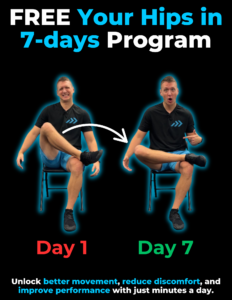How to Release Your Levator Scapulae Muscle: Tips and Exercises
Do you suffer from persistent neck and shoulder pain that just won’t go away? The culprit might be a tight levator scapulae muscle. This muscle, which runs from the upper neck to the shoulder blade, often becomes tight and painful due to poor posture, stress, or overuse. In this article, we’ll discuss what the levator scapulae is, why it becomes tight, and how you can effectively release the levator scapulae muscle for good using a three-step approach.
If you prefer videos, watch the video version below!
Understanding the Levator Scapulae Muscle
The levator scapulae muscle is a long, thin muscle that stretches from the transverse processes of the first four cervical vertebrae to the superior part of the scapula (shoulder blade). Its primary function is to lift the scapula, hence its name “levator” scapulae. It also helps in rotating the scapula downward and tilting the head to the same side.
Why the Levator Scapulae Becomes Tight and Painful
Several factors can contribute to the levator scapulae becoming tight and painful:
- Poor Posture: Prolonged periods of sitting, especially with a forward head posture, can strain the levator scapulae.
- Stress: Emotional stress often causes muscle tension, particularly in the neck and shoulder region.
- Overuse: Repetitive activities, such as lifting or carrying heavy loads, can overwork the levator scapulae.
- Injury: Trauma or sudden movements can lead to strain and tightness in the levator scapulae.
A Three-Step Approach to Releasing the Levator Scapulae
To release the levator scapulae muscle effectively, you need a comprehensive approach that addresses muscle tension and restores proper motion. This involves static stretching, active stretching using post-isometric relaxation (PIR), and cervical controlled articular rotations (CARs).
1. Reduce Tension with a Static Stretch
Static stretching helps lengthen the muscle and reduce initial tension.
- Levator Scapulae Stretch: Sit or stand with your back straight. Reach your right arm over your head and place your hand on the left side of your head. Gently pull your head towards your right shoulder, while looking slightly downwards, until you feel a stretch along the left side of your neck. Hold for 30 seconds, then switch sides. Repeat 2-3 times on each side.
2. Reduce Tension with an Active PIR Stretch
Post-Isometric Relaxation (PIR) stretching combines muscle activation followed by relaxation to achieve a deeper stretch.
- PIR Stretch for Levator Scapulae: Sit in a comfortable position. Place your right hand on your left shoulder to stabilize it. With your left hand, gently pull your head towards your right shoulder while looking slightly downward. Hold the stretch gently for 10 seconds. Next, try to push your head back against your hand without moving it, holding this resistance for 5 seconds. Relax and gently pull your head a bit further into the stretch. Hold for another 10 seconds. Switch sides and repeat 2-3 times per side.
3. Restore Motion with Cervical CARs
Controlled Articular Rotations (CARs) help maintain and restore the full range of motion in the cervical spine, ensuring the levator scapulae can move freely without becoming tight again.
- Cervical CARs: Sit or stand with good posture. Slowly tuck your chin towards your chest and begin to rotate your head to the right, moving your ear towards your shoulder. Continue the movement, bringing your head back, looking up towards the ceiling, then rotate to the left side, and finally tuck your chin back towards your chest, completing a full circle. Perform 2-3 slow, controlled circles in each direction. This exercise helps maintain joint mobility and prevent muscle tightness.
Conclusion
Releasing the levator scapulae muscle for good requires a targeted approach that reduces muscle tension and restores proper motion. By incorporating static stretches, active PIR stretches, and cervical CARs into your routine, you can effectively alleviate pain and improve the flexibility and function of your levator scapulae.
Consistency is key—regularly practicing these exercises will help you maintain a healthy neck and shoulder region, preventing the levator scapulae from becoming tight and painful again. If your symptoms persist or worsen, consider consulting with a healthcare professional for personalized advice and treatment. By taking proactive steps to release the levator scapulae muscle, you can enjoy a pain-free and more comfortable daily life.
Need a consistent plan for Mobility Training?
Do you know you need to train your mobility, but you don’t know where to start? Don’t worry, I have you covered! That is exactly why I created the Mobility Suite App so you can start mobility training for a fraction of the price of seeing a physical therapist and/or chiropractor!
I’ve created a library of mobility training programs (from hip mobility to spinal mobility) that you can have on-demand access to. These programs were carefully crafted to help you get the most out of mobility training with only minutes of work per training session! Less is more with mobility training. The most important thing is consistency! So, if you need a consistent strategy, start your FREE 7-day trial to my Mobility Suite App!
Why offer a 7-day free trial? I firmly adhere to the “1-week rule.” If you commit to consistent mobility training for one week, you’ll gather enough data to determine if it’s right for you. I’m confident that these programs will benefit you, and I want to give you the chance to experience it firsthand, completely free for one week. This way, you can determine whether mobility training aligns with your goals and needs without any financial commitment!
You have nothing to lose but the stiffness in your joints. Don’t let discomfort hold you back any longer— tap/click the button below to join today and take the first step toward a more mobile and pain-free lifestyle!







